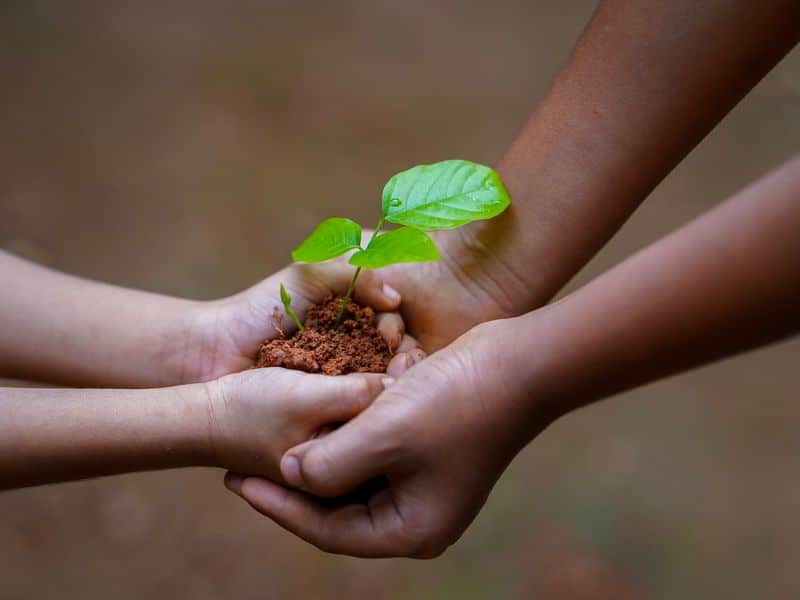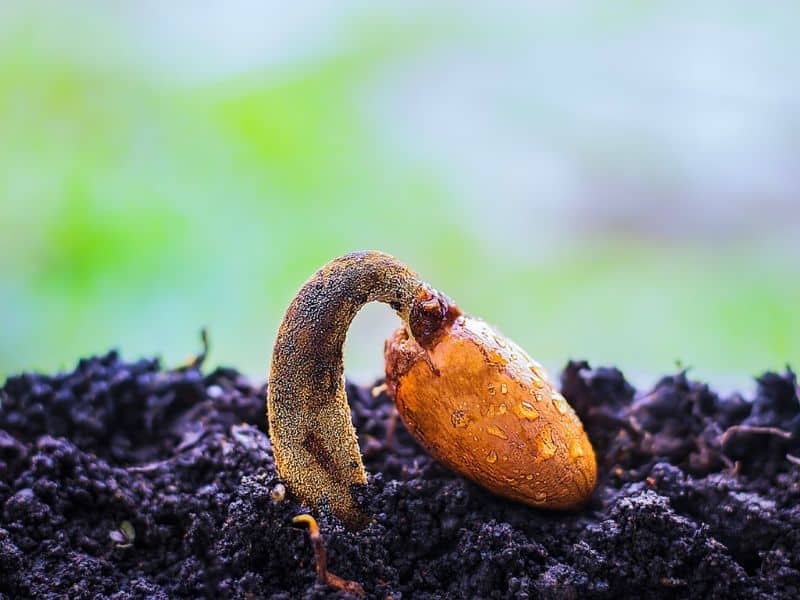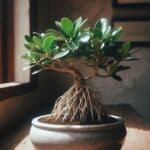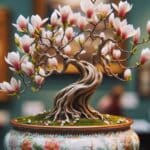They say you reap what you sow, and bonsai enthusiasts can never reap enough fresh young trees that can be sculpted into gorgeous bonsai plants.
Seeing a young sprout grow and develop into a beautiful bonsai is one of life’s most rewarding experiences. It is a lot of fun to develop your skills as a bonsai artist, and it can be great to have a collection of pet trees to brighten your day.
You can take many different journeys to start bonsai trees, but one of the most popular methods is simply growing them from bonsai seeds.
In this guide, we will look at some of the best methods and tips you can try if you want to plant a tree from bonsai tree seed and get it to develop healthy and strong.

Why Grow a Bonsai from Seed?
Bonsai trees can be crafted from older potted trees, young trees, saplings, or seeds. Naturally, starting your bonsai from a young tree or sapling is much quicker. This is because it can take quite some time for a tree species to achieve the needed growth height and strength to undergo all invasive techniques required for forming a bonsai. You will get a huge headstart when you start your bonsai from a young tree.
So why should you grow it from seed? Here are some of the top reasons.
Easier to Acquire Rare Species
Growing bonsai trees from seed might be your only option because some of the most beautiful tree species can be difficult to locate in your local nursery, while the seeds are much easier to acquire. You can harvest tree seeds from your natural environment, and purchasing seeds online from remote destinations is much easier than transporting a live tree.
More Affordable
Growing a tree from seed can also be much more affordable than purchasing a young seedling. This is especially true for beginner bonsai artists who might have a lower success rate with a newly acquired hobby. You can germinate a whole bunch of tree seeds at a fraction of the cost of one young tree.
Easier to Manipulate
The best reason to start a bonsai tree from seed is, however, so you can craft it according to your heart’s desire. When you start a tree from seed, the sprout can be manipulated into the desired shape and form right from the start. This is ideal for creating more minuscule trees with a more authentic bonsai appearance or trees with minimal scarring.

Where to Find Seeds for Bonsai Trees
There are lots of different ways to find the seeds you need for your bonsai creations. You can harvest seeds from local trees, find them inside fresh produce, or buy them online.
The Natural Environment
The best and most affordable way to get your hands on some seeds is by gathering them yourself from your natural environment. This is also the healthiest method since it will give you time to walk through nature while seeking the perfect specimens.
Look at the local trees around you and try to identify the species. All sorts of natural or local trees, including conifers, chestnuts, pines, and ficus trees, are ideal for growing bonsai.
The best time to collect tree seeds is when they are mature. This can be tricky to identify since tree seeds look different for each species. Most tree seed pods turn brown and fall to the ground when ripe. Fruit tree seeds are usually ready to harvest when the fruit is over-ripe.
Inside Produce
Your local grocery store or fresh food market is an excellent source of bonsai tree seeds. Most of the fruits sold in these environments have some seeds inside them that can be collected and used for growing bonsai trees.
Some of the best tree species to look out for in local stores include citrus trees like lemons, kumquats, apples, pomegranates, and persimmons.
This method is probably one of the sweetest and most fun to try since you can reward your expeditions with a fresh fruit salad.
Buy Seeds Online
The internet is a terrific source for some rare specimen seeds. There are lots of tree seed dealers that offer great quality seeds at a very good price.
When you are buying seeds online, it is best to take a look at the company reviews and to buy from local stores. With cheap international seed distributors, you are never guaranteed what you will get and there is always a risk of ending up with some invasive plant species that are not good for the environment.

Bonsai Tree Species That are Easy to Grow from Seed
Not all trees are easy to grow from seed. Some species have a very low germination rate, while the germination process for certain species requires laboratory conditions. If you want to avoid frustration, it is usually best to focus on tree species with a high germination rate that can grow relatively fast from sapling into young trees.
Here is a quick list of some of the bonsai tree species that horticulturists find relatively easy to germinate and grow.
- Maple bonsai
- Scots pine bonsai
- Black pine bonsai
- Larch bonsai
- Breech bonsai
- Lemon bonsai
- Pomegranate bonsai
- Jacaranda bonsai
- Baobab Bonsai
- Wisteria bonsai
- Royal Empress bonsai
- Leopard Tree
- Fever Tree
- Kei Apple
- American Sweetgum
- Boxwood bonsai
- Wild Olive bonsai
- Cedar tree bonsai
- Azalea tree
How to Germinate Seeds
Most seeds will naturally germinate if you plant them in potting soil or peat moss in a container and keep them moist for a few weeks. It is also important to place the seeding tray in a warm area with indirect light but no direct sunlight.
Some tree seeds will start to germinate within a few weeks, while others can take months. To get these seeds to germinate faster, growers can use several strategic techniques.
Techniques to Encourage Seed Germination
Most tree seeds are hard pits and the germination process may differ depending on tree species. When the grower wants the seed to sprout, they need to mimic an environment during which the seeds usually sprout.
Some tree seeds are pretty simple to sprout as long as you plant them at the correct time while others require additional techniques like seed stratification to prepare the seed for growing. Here is a quick look at some of the techniques growers can use to encourage the seed to sprout.
Seed Stratification
Some seeds have a tough shell that can make it time-consuming for them to germinate, and this thick shell can also affect the chances of germination.
Growers sometimes scar the seed shell so moisture can easily pass through this hard coating to wake the embryo and encourage it to grow.
To do scarification, you must first soak the seeds in water for a day. This will soften up the shell a little bit.
After soaking the seeds, you can dry them and take some sanding paper. Gently sand away some of the thickness on the edge of the seed shell. Scarring can be done by nicking the edges with nail clippers or scratching it with a knife.
Seed Scarification
Some seeds have a very hard shell that can make them time-consuming to germinate and this thick shell can also affect the chances of germination.
Growers sometimes scar the seed shell so moisture can easily pass through this hard coating to wake up the embryo and encourage it to start growing.
To do scarification, you will first need to soak the seeds in water for a day. This will soften up the shell a little bit.
After soaking the seeds, you can dry them off and take some sanding paper. Gently sand away some of the thickness on the edge of the seed shell. Scarring can also be done by nicking the edges with nail clippers or by scratching it with a knife.
Soaking
Before the seed can germinate, it will need to be exposed to lots of moisture for a period of time. This will make the shell soft. Once water reaches the seed’s embryo, it will awaken and sprout.
You can boost this germination process by soaking the seeds in water for about 24 hours before planting them.

Steps for Growing a Bonsai From Seed
The steps for growing a bonsai tree from seed is pretty simple. The most important thing is to carefully monitor the seeds, seedling, and sapling as it develops and to ensure that it has all the right conditions. Here is a quick look at the right steps to follow.
Stage 1 – How to Plant Seeds – (0-90 Days)
It is always best to start with some healthy and high-quality seeds. Some growers like to germinate the seeds inside a plastic bag before transplanting them into a pot. Others prefer to plant the seeds directly in the soil. Let’s take a quick look at how to do this.
Plastic Bag Germination Method
You will need a paper towel, a sandwich bag, and your quality seeds for this method. Place the seeds on the paper towel and gently mix them with clean water to saturate them. Place the paper towel inside a plastic bag.
You can now position the bag in a warm location without direct sunlight. Keeping the bag at 70 – 82 degrees F or 22 – 28 degrees C is ideal since this is the perfect temperature for growing most tree species.
Check the seeds regularly and plant them in some potting soil when they sprout.
Soil Germination and Growing Method
You will need a seedling tray, some potting soil or peat moss, and quality tree seeds to grow your seeds directly in the soil.
To speed up the process, you can prepare the seed by soaking it in water for 24 hours before planting it. If the seed has a tough shell, you can also scarify the shell.
Fill your well-draining container with suitable soil and plant the seeds in the ground. You only need to grow about one-inch deep seeds for most tree species.
Saturate the seeds correctly and place the container in a warm area with direct sunlight but no direct sun.
Keep the soil or peat moss moist until the seeds sprout.
Some growers like to mimic greenhouse conditions by placing the seedling tray inside a clear tub or placing a plastic bag or lid over the container. This will raise the humidity levels of your growing environment and can boost your germination rate. If you use this technique, it is important to open the container daily to allow the bonsai seeds to breathe.
Stage 2 – Caring for Your Seedling – 90 days to 3 Years
Once your little seed has sprouted and the seedling is growing strongly, you will need to take good care of it so it can grow strong enough to bonsai. A bonsai is at its most delicate when it is still a young sapling because the delicate stems can easily break and the foliage is very sensitive to climate conditions.
Wait for the seedling to sprout at least two leaves before transplanting it. You can now carefully remove the seeds from the seedling trays and plant them in separate pots. This will allow them to expand and grow larger.
If you are transplanting them into separate pots, you should use proper potting soil. Avoid peat moss since this growing medium tends to retain too much moisture which can be harmful to the root system.
Keep the bonsai seedling moist for a few days after transplanting it and gradually decrease watering. Even though you are reducing watering, you should be careful to water regularly. If the soil dries out completely, the roots can shrivel up and die.
At first, the seedling will need to be kept in a warm shaded position. You can gradually move it to direct sunlight as it becomes stronger and larger.
The time it takes for a seedling to become strong enough for bonsai growing might depend on the tree species. Trees with a fast-growing rate can be ready to style into bonsai form in just 90 days while some might take 3 years to mature enough to bonsai.
Step 3 – Sapling or Pre-Bonsai – 2 to 5 Years
It usually takes 2 – 5 years for bonsai seedlings to develop stable woody trunks. At this point, your young tree is called a bonsai sapling.
A sapling is a pre-bonsai tree that is ready to be trained and shaped into bonsai form.
The first step for developing the sapling into a bonsai tree is to transfer it into a suitable bonsai pot. The bonsai pot should have plenty of drainage holes and the sapling should be planted in a proper bonsai soil mixture.
This is also the stage where you can start pruning the little tree into a more desired shape and you can use bonsai wire to manipulate its shape.
Step 4 – Young Bonsai Plant – 6 to 20 Years Old
After a few years, your sapling will grow into a beautiful young bonsai. The trunks will be more stable, there should be plenty of branching, and the tree will likely have quite a bit of bark on its trunk.
The time it takes to grow a bonsai from seed into young bonsai depends on the species. Many species will be young trees in just six years, while some might take 20 years to properly mature.
At this point, you will need to transfer the bonsai into a more suitable shallow pot. The tree should be planted in high-quality bonsai soil.
As a young bonsai, the little tree will likely already have a defined shape, and you will only need to maintain the shape and modify the branches with copper wire.
Young bonsai plants should be pruned at least once a year and repotted every 1 – 3 years, depending on the species. This is because the little tree still grows a lot and might need a lot of nutrients.
Step 5 – Mature Bonsai Tree – Over 21 Years
It takes more than a decade for most tree species to mature. At this point, your tree should be well-established with a distinctive bonsai shape and a classic bonsai appearance.
When the bonsai have been properly trained and shaped, you will only need to take good care of the mature tree and meet its needs to keep it healthy.
Mature bonsai trees usually require less water than a young tree or young seedling and only need to be repotted once every 3 – 5 years, depending on the species.
With mature trees, you only need to do some maintenance pruning during early spring and the growing season to maintain its shape.
Conclusion
Growing bonsai trees from seed can be intimidating because the process can be long-winded. This can be an excellent option if you don’t want to spend a lot of money on this hobby if you want to grow a rare bonsai species, or if you want to grow a particularly small bonsai tree.
We hope you enjoyed our guide and found the tips we shared useful. We also wish you the best of luck on your journey and hope your seeds will quickly sprout and become beautiful bonsai.







